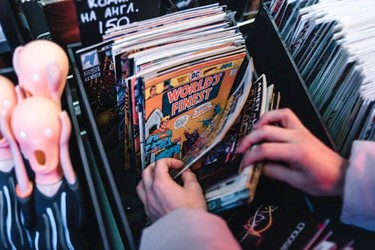Comic books have been around for almost a century, and their influence can be felt in many forms of modern storytelling. From blockbuster movies to award-winning TV shows, the comic book medium has had a profound impact on how stories are told. But what about vintage comic books? How did these early comics influence the medium we know and love today?
To understand the influence of vintage comic books on modern storytelling, we need to take a closer look at the early days of the medium. So, let’s get started.
The Golden Age of Comics
The Golden Age of comics is typically defined as the period from the late 1930s to the early 1950s. This was the era of the superhero, with characters like Superman, Batman, and Captain America taking center stage. These early comics were marked by their simple storytelling and bold, colorful artwork.
One of the most significant influences of the Golden Age was the introduction of comic books as a mass-market medium. Prior to this, comics were typically only found in newspapers or specialized magazines. The rise of comic books allowed creators to tell longer, more complex stories that could reach a wider audience.
The Silver Age of Comics
The Silver Age of comics is generally considered to be the period from the mid-1950s to the early 1970s. This was a time of great experimentation in the medium, with creators pushing the boundaries of what was possible.
One of the most significant influences of the Silver Age was the rise of Marvel Comic books. Under the leadership of Stan Lee and Jack Kirby, Marvel introduced a new type of superhero – flawed, complex characters with relatable human problems. This approach to storytelling would go on to have a profound influence on modern comics and graphic novels.
The Bronze Age of Comics
The Bronze Age of comics is typically defined as the period from the early 1970s to the mid-1980s. This was a time of great change in the medium, with creators pushing the boundaries of what was possible.
One of the most significant influences of the Bronze Age was the rise of independent comics. These were classic comic books produced outside of the traditional publishing industry, often by individual creators or small groups of creators. This approach to comics allowed for greater experimentation and diversity in storytelling, paving the way for the graphic novel boom of the 1980s.
The Modern Era of Comics
The modern era of comics is generally considered to be the period from the mid-1980s to the present day. This is a time of great diversity in the medium, with comics and graphic novels of all genres and styles.
One of the most significant influences of the modern era has been the rise of manga. Manga is a style of Japanese comics that has become increasingly popular in the West in recent years. Its influence can be seen in many modern comics and graphic novels, with creators borrowing elements of the style to tell their own stories.
FAQ
Q: How did the introduction of the comic book as a mass-market medium change storytelling?
A: The rise of vintage comic books allowed creators to tell longer, more complex stories that could reach a wider audience. Prior to this, comics were typically only found in newspapers or specialized magazines. The introduction of comic books as a mass-market medium paved the way for the graphic novel boom of the 1980s and beyond.
Q: How did the rise of Marvel Comics influence modern storytelling?
A: Marvel Comics introduced a new type of superhero – flawed, complex characters with relatable human problems. This approach to storytelling would go on to have a profound influence on popular comic books and graphic novels. Marvel's characters were more relatable, and their stories tackled real-world issues in a way that had never been seen before in comics.
Q: What is manga, and how has it influenced modern storytelling?
A: Manga is a style of Japanese comics that has become increasingly popular in the West in recent years. Its influence can be seen in many modern comics and graphic novels, with creators borrowing elements of the style to tell their own stories. Manga often features unique storytelling techniques, such as the use of panels and page layouts to create a sense of motion and movement.
Conclusion
Vintage comic books have had a profound influence on modern storytelling. The Golden Age introduced the superhero, while the Silver Age introduced flawed, complex characters with relatable human problems. The Bronze Age saw the rise of independent comics, which allowed for greater experimentation and diversity in storytelling.
These early comics laid the foundation for modern storytelling, and their influence can be felt in many forms of media today. Whether you are a fan of comic books, graphic novels, or manga, the influence of vintage comics on modern storytelling cannot be denied.










